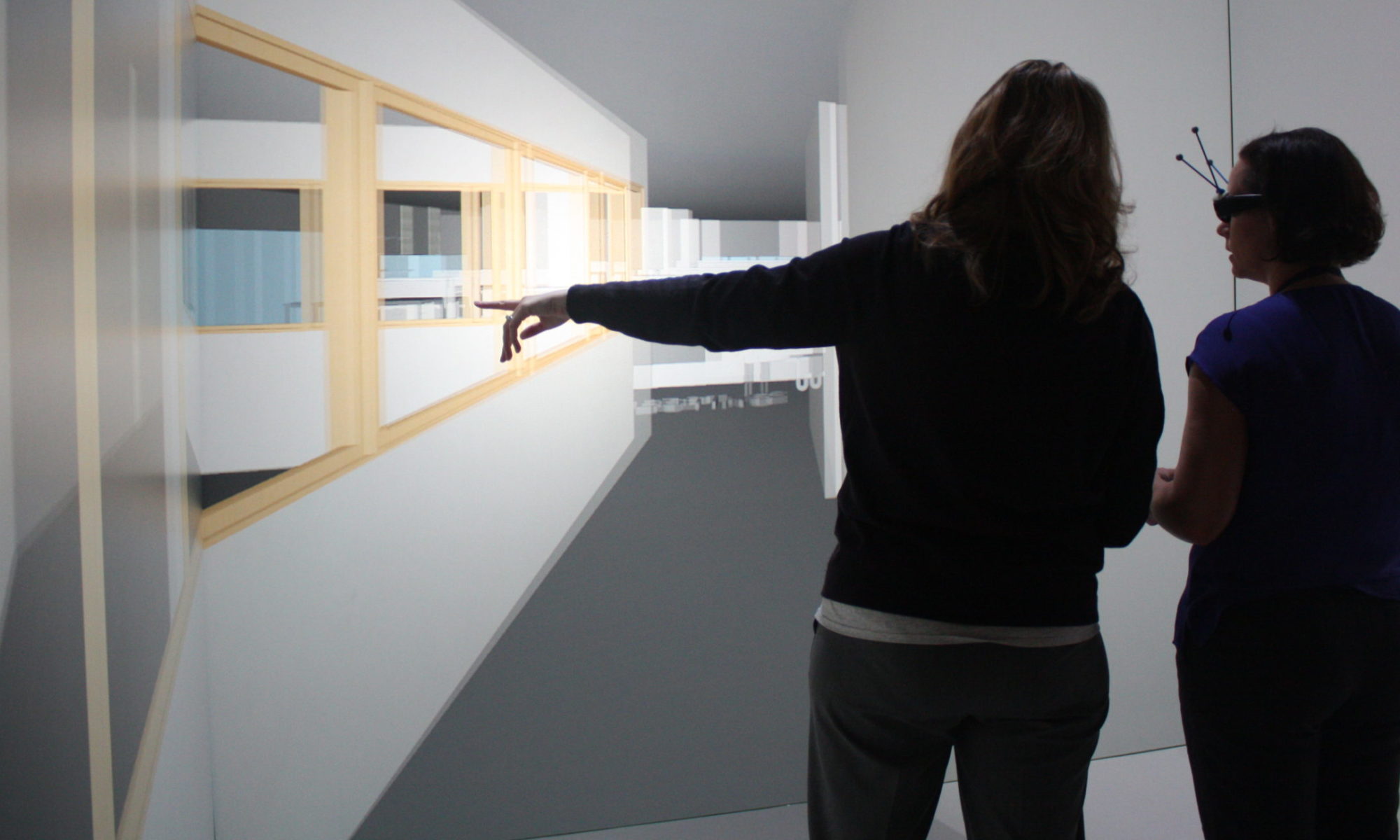Using the MIDEN for Hospital Room Visualization

How can doctors and nurses walk around a hospital room that hasn’t been built yet? It may seem like an impossible riddle, but the Duderstadt Center is making it possible!
Working with the University Of Michigan Hospital and a team of architects, healthcare professionals are able to preview full-scale re-designs of hospital rooms using the MIDEN. The MIDEN— or Michigan Immersive Digital Experience Nexus— is our an advanced audio-visual system for virtual reality. It provides its users with the convincing illusion of being fully immersed in a computer-generated, three-dimensional world. This world is presented in life-size stereoscopic projections on four surfaces that together fill the visual field, as well as 4.1 surround sound with attenuation and Doppler Effect.
Architects and nursing staff are using the MIDEN to preview patient room upgrades in the Trauma Burn Unit of the University Hospital. Of particular interest is the placement of an adjustable wall-mounted workstation monitor and keyboard. The MIDEN offers full-scale immersive visualization of clearances and sight-lines for the workstation with respect to the walls, cabinets, and patient bed. The design is being revised based on these visualizations before any actual construction occurs, avoiding time-consuming and costly renovations later.








